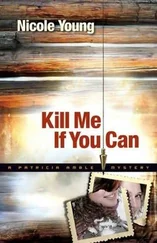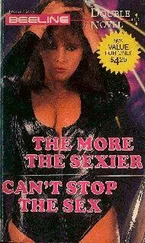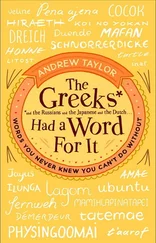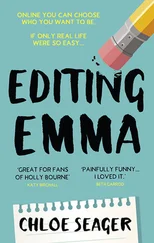Harrow was having a smoke outside the semi when Deputy Colby Wilson, with the hangdog expression of all time, came tentatively over. The heel of a hand was on his holstered revolver.
“Can I talk to you a second, Mr. Harrow?”
“What do you want, Colby? I’ve said my piece.”
“I, uh... haven’t said mine. What you said about immunity... you think that’s a possibility?”
“I do, for the first conspirator who comes forward and comes clean.”
He laughed, but it was humorless, more a cough. “Is that what I come to after all these years? Being a conspirator? Who do I go to, Mr. Harrow? Who do I talk to?”
“I’ll get someone from the state police,” he said, and did.
Because of his knowledge about the case, Harrow was asked by the state police not only to sit in on the interview, but to conduct it. It was irregular, but there was a moment that needed to be seized: right now, Colby Wilson wanted to talk, and he didn’t ask for a lawyer to be present.
The interview was held in the Crime Seen! lab, since the state police did not under the circumstances wish to borrow facilities from the local authorities.
Colby Wilson said, “I was one of the guys in the car that night — Gibbons knew about it, but he wasn’t there.”
Harrow asked, “Who else was there?”
Wilson gave him three more names, all current Smith County deputies.
“Why kill Cathy Shelton and her boy? Doesn’t make sense, Colby.”
“We didn’t mean to.” He wasn’t able to look at Harrow. “It was an accident. We went there to scare them. Put the fear of God in ’em, or anyway the fear of Sheriff Brown. We shook her and slapped her around, broke some knickknacks, even some furniture... but she had this gun she got to, that we didn’t know about. When she aimed that thing at us, we didn’t have any choice. It was sort of like... self-defense.”
Sort of like , Harrow thought.
“And the kid had seen us...” The beefy deputy shrugged. “Things got out of hand.”
Harrow said nothing.
“At night, I close my eyes, and I see that kid,” Wilson said. “I didn’t shoot him myself! I didn’t do that! But I’ll never get past that.”
“Some things,” Harrow said, “you never do get past.”
The north-south highway turned out to be no rumor — the I-80–I-70 connector was due to start construction next year, and would be completed in less than three years, making the land Brown and his cronies owned worth tens of millions. Brown and his partners had also bought land in and between every small town along the route of the new highway. A major indoor mall and the United States museum in Lebanon were part of the master plan.
The show on the eighteenth had gone well, particularly a crowd-pleasing segment of Harrow and Laurene Chase on hand when a certain South American government, led by a president who “never missed” Crime Seen! , turned over a morose Daniel Brown to Interpol.
Jenny Blake had been surprised by how normal Brown looked — seventyish with a white beard and long hair, like somebody’s grandfather, not a monster at all. In profile, a little pudgy, he’d have made a good Santa Claus.
Now, on Monday afternoon, driving back to LA on the Crime Seen! bus, gliding across I-70 westbound, Jenny was with Pall, Anderson, Choi, and Carmen, watching satellite TV as Harrow did yet another in an endless parade of interviews.
If he’d gained national attention saving the President (and losing his family) and had become a reluctant star by getting his own crime-busting show, J.C. Harrow was in a galaxy of his own now. Many bad guys had been shot on national TV, but rarely a real one, by a real hero.
A backlash from gun control advocates was already well under way, and fringe types proclaimed (mostly online) that Shelton was either a hero or a victim. Not a hero certainly , Jenny thought, but a victim . Also a monster — as her friend Carmen could attest.
Valerie Jenkins, the missing bartender with the stray license plate, turned up in Omaha, Nebraska, with a new life that included another bartender gig and a trucker boyfriend she’d followed there.
But other loose ends would be much harder to tie up — twenty-some family killings that would challenge and bedevil law enforcement agencies all over the killer’s target-defaced map for months and even years to come.
On the screen, Carlos Moreno held the UBC microphone toward Harrow’s rugged movie-star features. Jenny wondered if Carmen wouldn’t rather be doing the interview herself; on the other hand, the reporter had declined a plane and requested that she ride back with the team.
Maybe we make her feel safe , Jenny thought.
Anyway, after her ordeal, Carmen could use a little downtime.
Moreno was asking Harrow, “How does it feel, getting an early pickup for a third season?”
“Gratifying,” Harrow said. “The team’s worked hard so far this season, but we never expected to wrap up our first case in three weeks. Still, we’ll have something special ready for November sweeps.”
Jenny shook her head. What could they possibly do to top their first three shows?
“You’d be considered a hero just for stopping Gabriel Shelton,” Moreno said. “Yet you’ve kept digging, working to put away the men who wronged the killer of your own family. Why would you do such a thing?”
Harrow paused. Then: “Shelton’s family were the first innocent victims. They deserved justice too. Also... he said something odd to me, that’s stayed with me — he said I’d ‘come to his rescue.’ Maybe in a way I did.”
Chris Anderson came up the aisle and plopped into the seat next to Jenny. They hadn’t dated or anything, but Carmen and Laurene might be right — Chris did seem to like her. He took her hand.
She shook free from him and said, “Not yet.”
“What?” Chris said in his lazy way. “I was just bein’ friendly.”
Out the windshield, Jenny saw what she’d been looking for since they left Lebanon — a sign that said WELCOME TO COLORADO.
Sitting back, smiling, Jenny took Chris’s hand in hers.
“ Now it’s okay?” he asked, clearly bewildered.
“Sure.” Her smile widened. “We’re not in Kansas anymore.”
Thanks to crime scene analyst Chris Kauffman, CLPE, retired lieutenant of the Bettendorf (Iowa) Police Department, who has been so much help to the authors in the past. Thanks also to computer forensics investigator Paul Van Steenhuyse, retired lieutenant, Scott County (Iowa) Sheriff’s Office.
Insights were also provided by profiler Steven R. Conlon, retired Assistant Director, Division of Criminal Investigation for the State of Iowa Department of Public Safety; and Matthew T. Schwarz, CLPE, Identification Bureau manager, Davenport (Iowa) Police Department. For behind-the-scenes TV production matters, we were helped by our longtime film and video collaborator, Phillip W. Dingeldein.
Among books consulted were: Practical Homicide Investigation (1996), Vernon J. Geberth; The Encyclopedia of Serial Killers (2000), Michael Newton; Mind-hunter (1995), John Douglas and Mark Olshaker; In the Minds of Murderers (2007), Paul Roland; and Profile of a Criminal Mind (2003), Brian Innes.
Special thanks are due the following: our editor, Michaela Hamilton, who was enthusiastic from the start and supportive throughout; agent Dominick Abel, for his friendship and professionalism; and our wives, Barb and Pam, in-house editors and support systems.
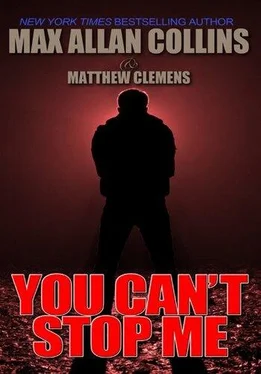
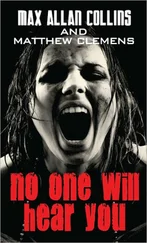
![Сьюзан Кейн - Quiet [The Power of Introverts in a World That Can't Stop Talking]](/books/33084/syuzan-kejn-quiet-the-power-of-introverts-in-a-wo-thumb.webp)
